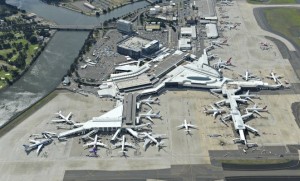
Major airports experienced solid passenger growth during 2012 on the back of increasing demand in the resources sector and improved international traffic.
Melbourne Airport achieved five per cent growth to reach a total of 29,297,387 passengers. The airport’s CEO, Chris Woodruff, attributed the increase to sustained growth in international markets including China, Hong Kong, New Zealand, India, Sri Lanka and Vietnam, which contributed to a six per cent increase in total international traffic. Domestic traffic saw a five per cent rise based on increased capacity, to 22.3 million passengers.
Brisbane Airport achieved 4.5 per cent growth, recording 21.5 million passengers during 2012. The majority of the growth was in domestic traffic – up five per cent – based primarily on the resources sector. Brisbane Airport Corporation CEO Julieanne Alroe said: “With the resources sector still heavily contributing to demand, seven of the top 10 fastest growing city pairs were intrastate routes with total intrastate traffic volumes growing at three times that of total interstate traffic volumes.” International volumes at Brisbane increased by a modest 1.4 per cent.
Sydney Airport recorded 3.6 per cent growth, to serve 36.9 million passengers during the year. International traffic increased 5.3 per cent while domestic throughput grew by 2.7 per cent.
Operator of Gold Coast, Townsville, Mt Isa and Longreach airports – Queensland Airports Limited (QAL) – finished 2012 on a positive note, recording an aggregate 10.2 per cent increase in passenger traffic during December. Long-haul international services grew by an impressive 49 per cent at Gold Coast on the back of new capacity provided by Scoot from Singapore, improving loads on AirAsia X to/from Kuala Lumpur and Jetstar’s Japan services. QAL’s overall annual performance saw an aggregate 6.7 per cent increase.












